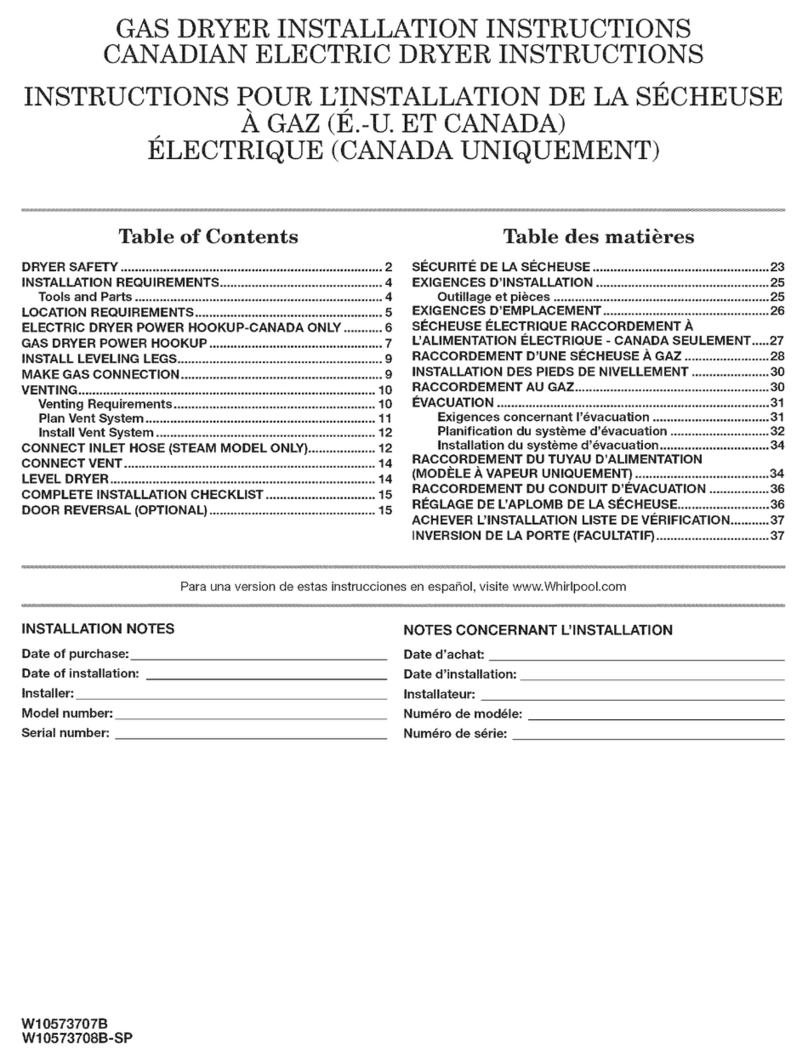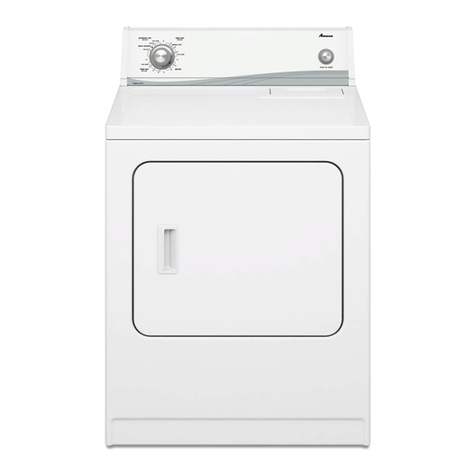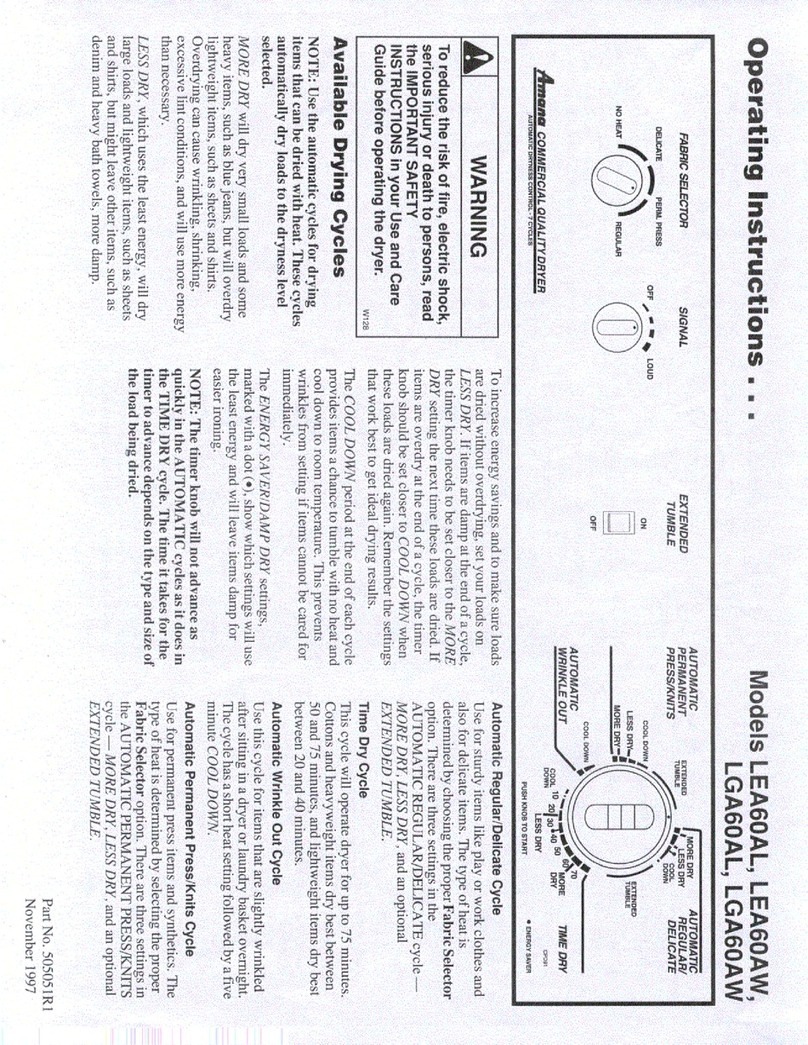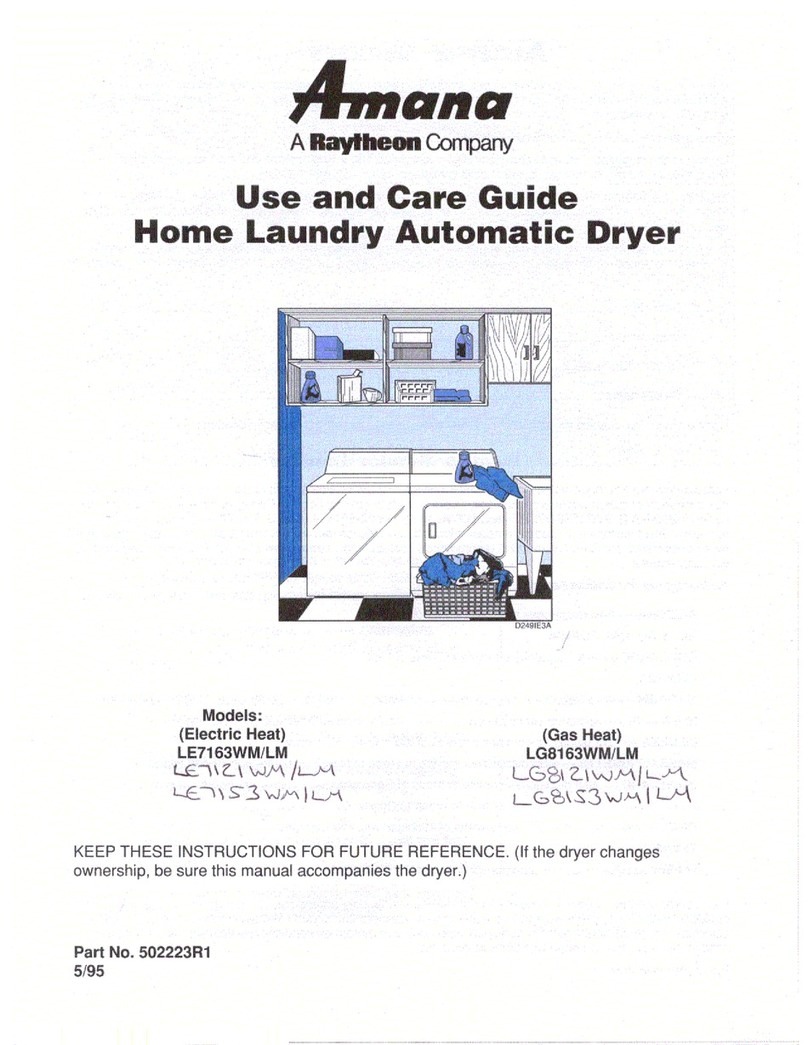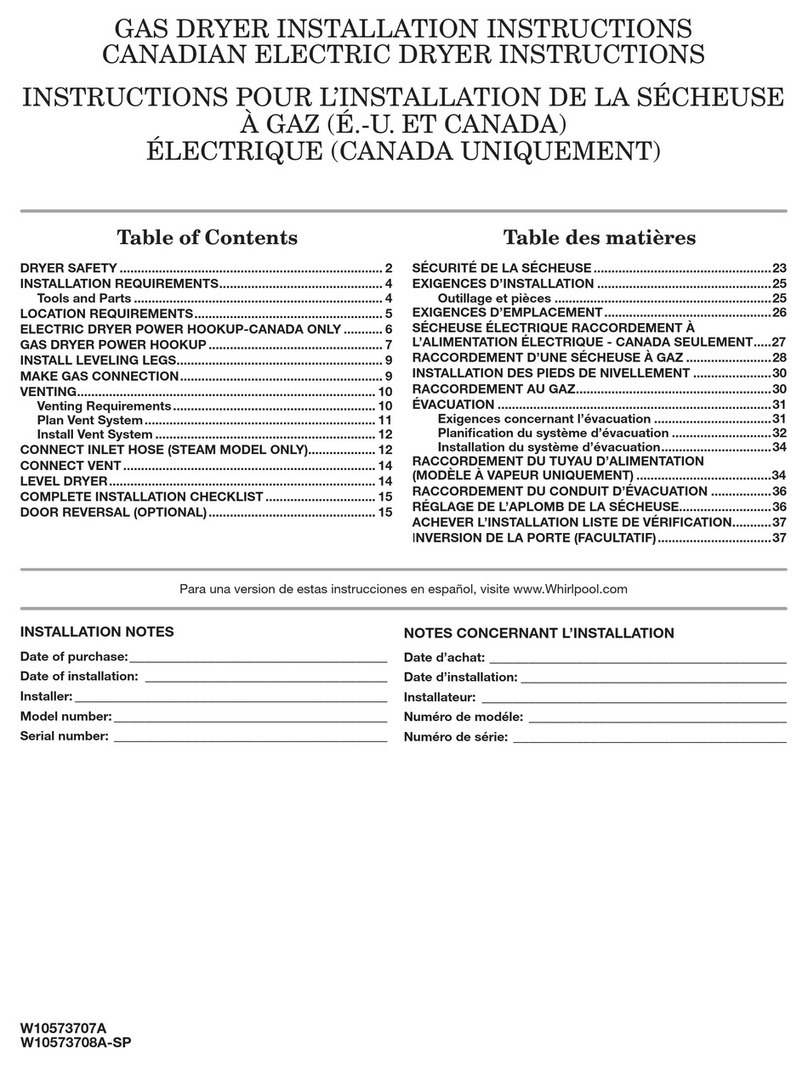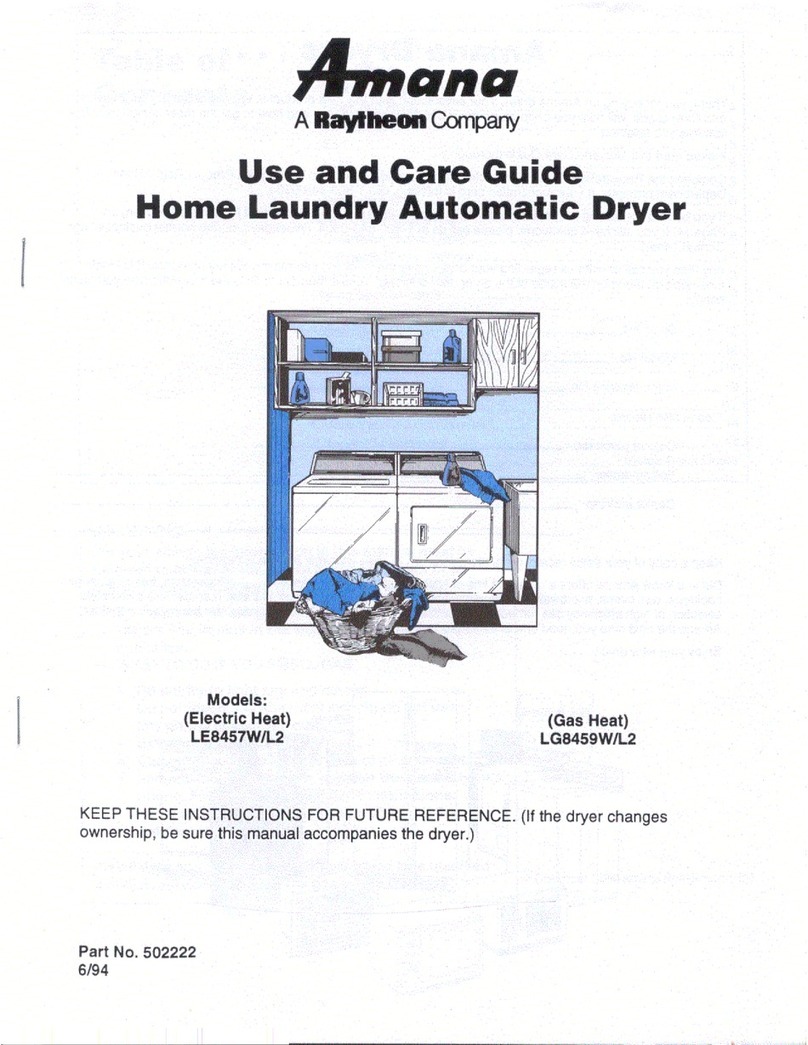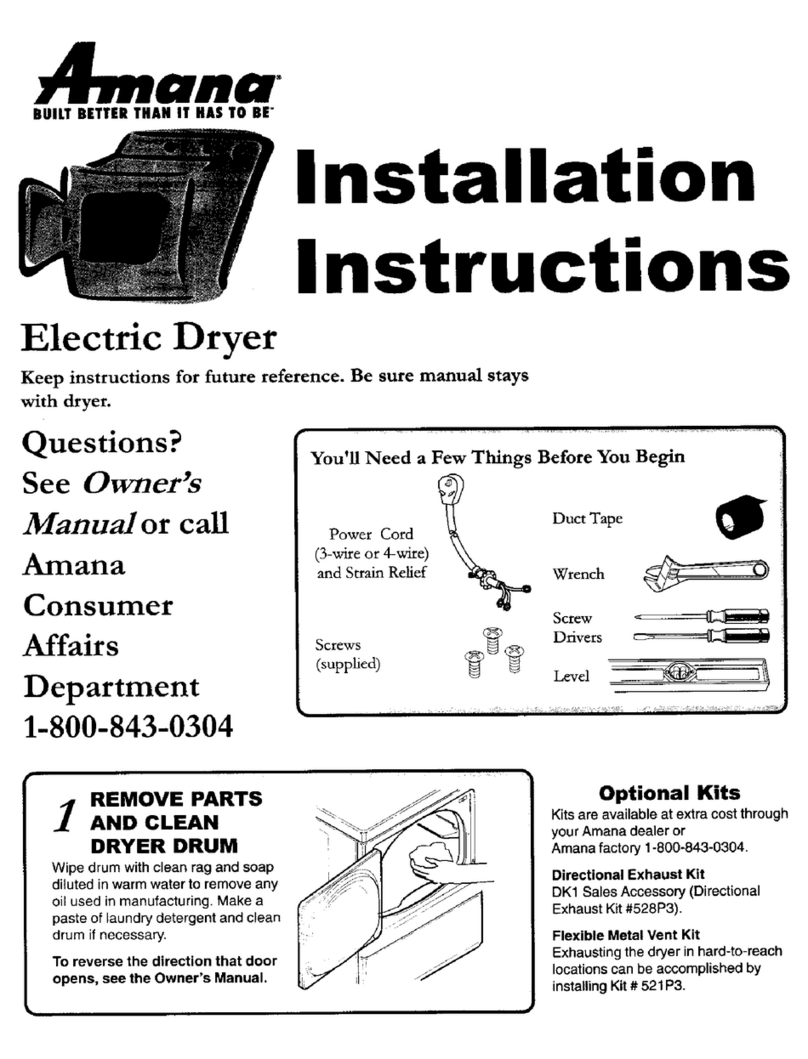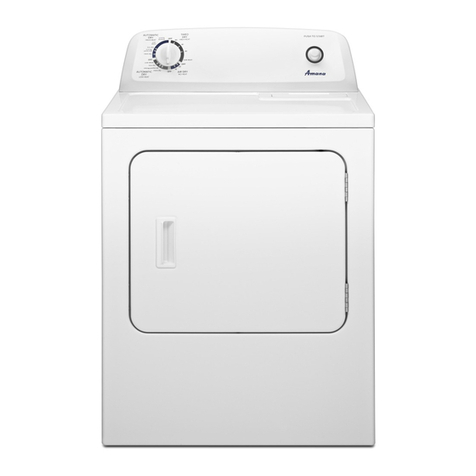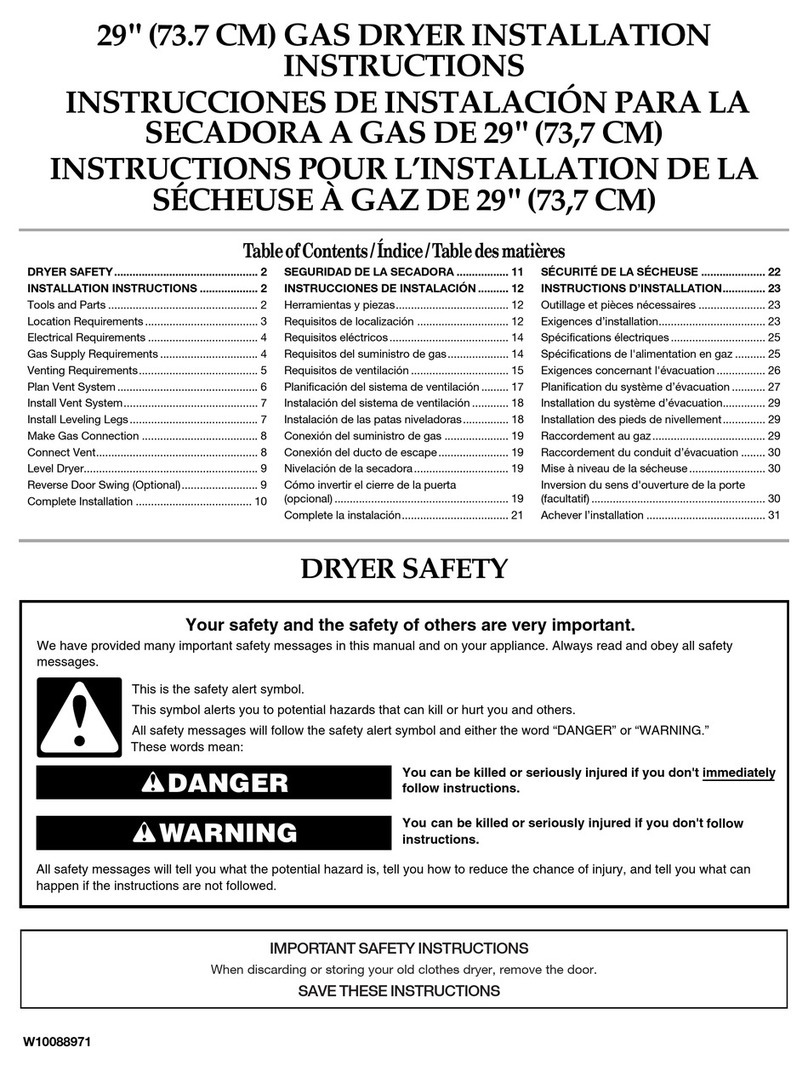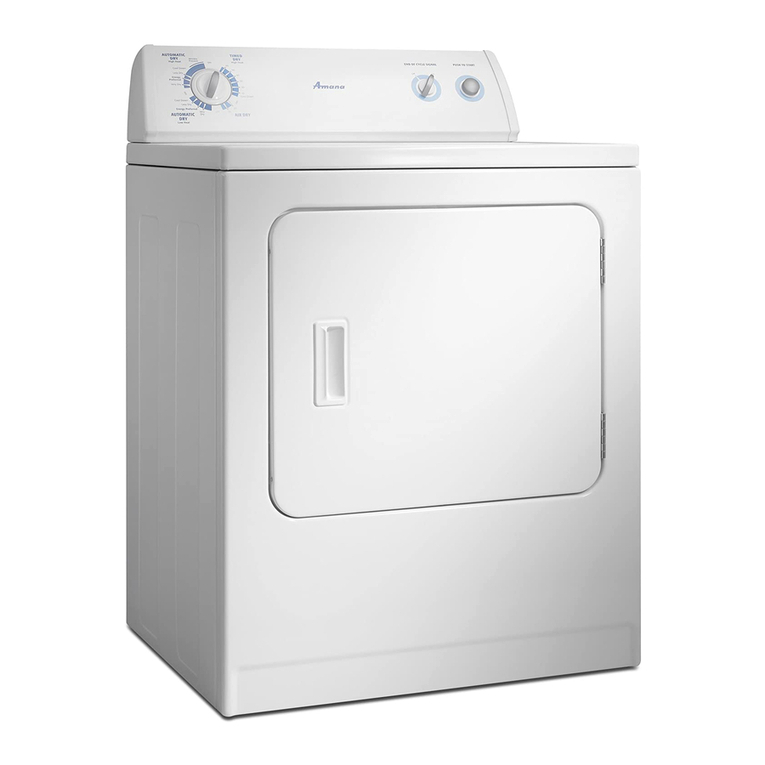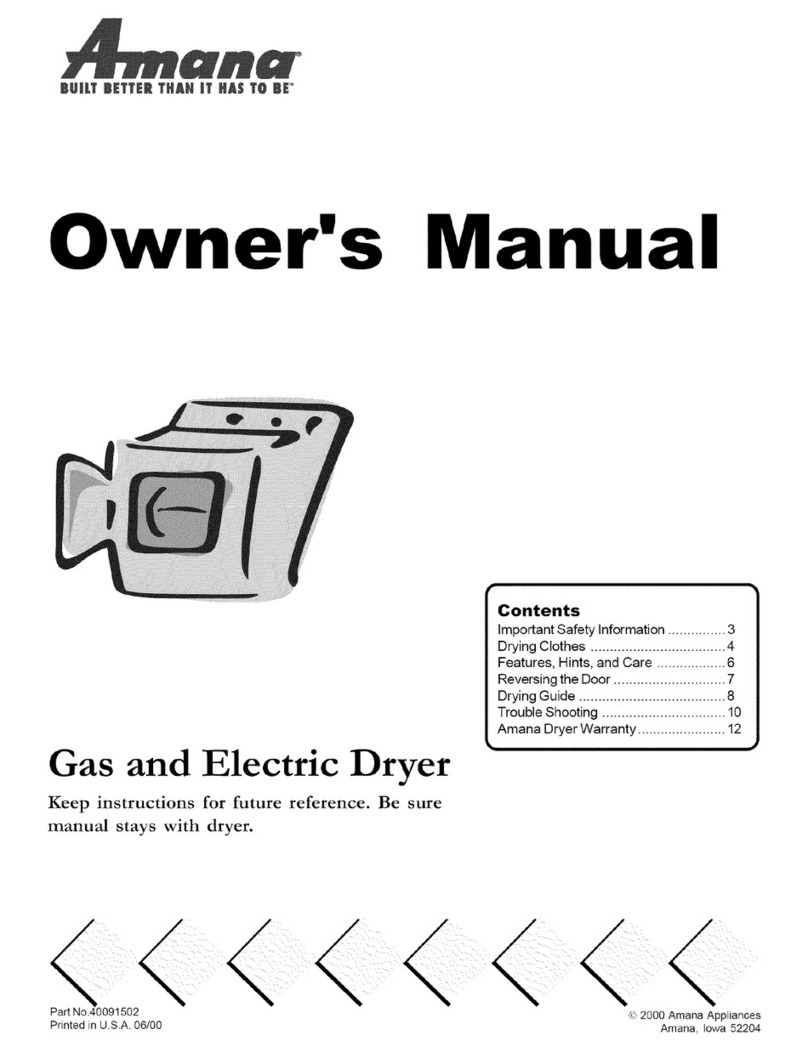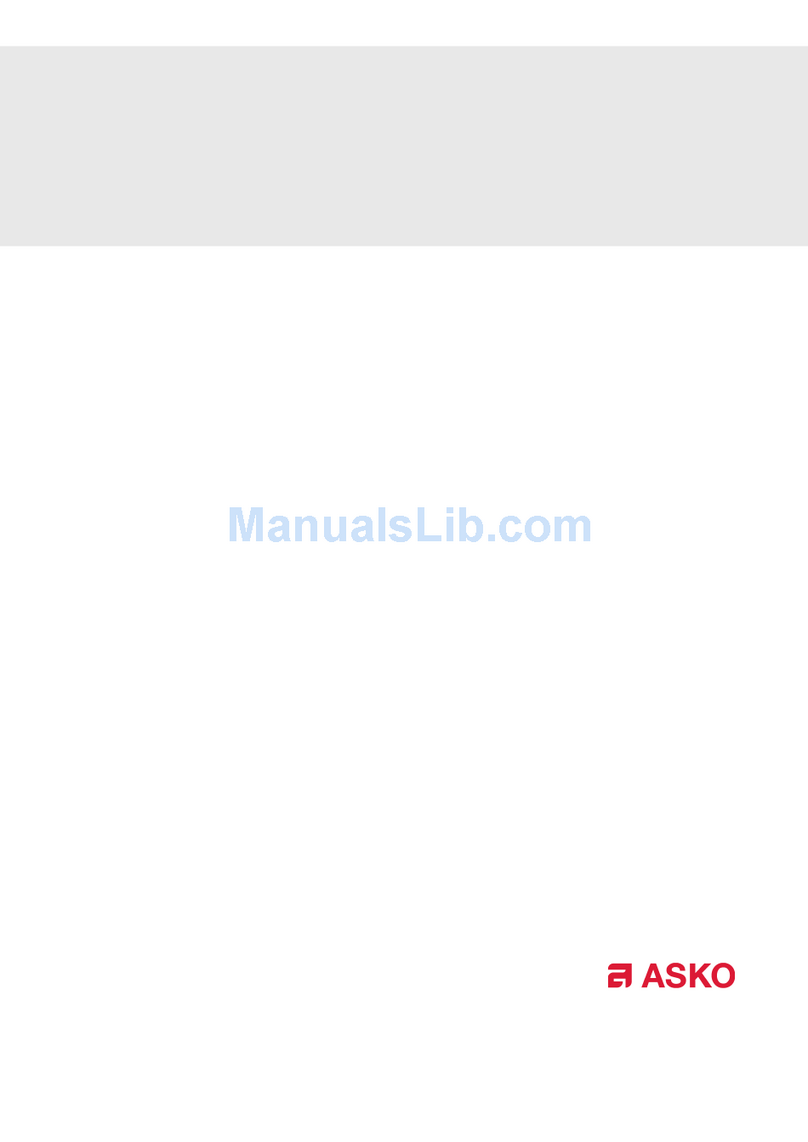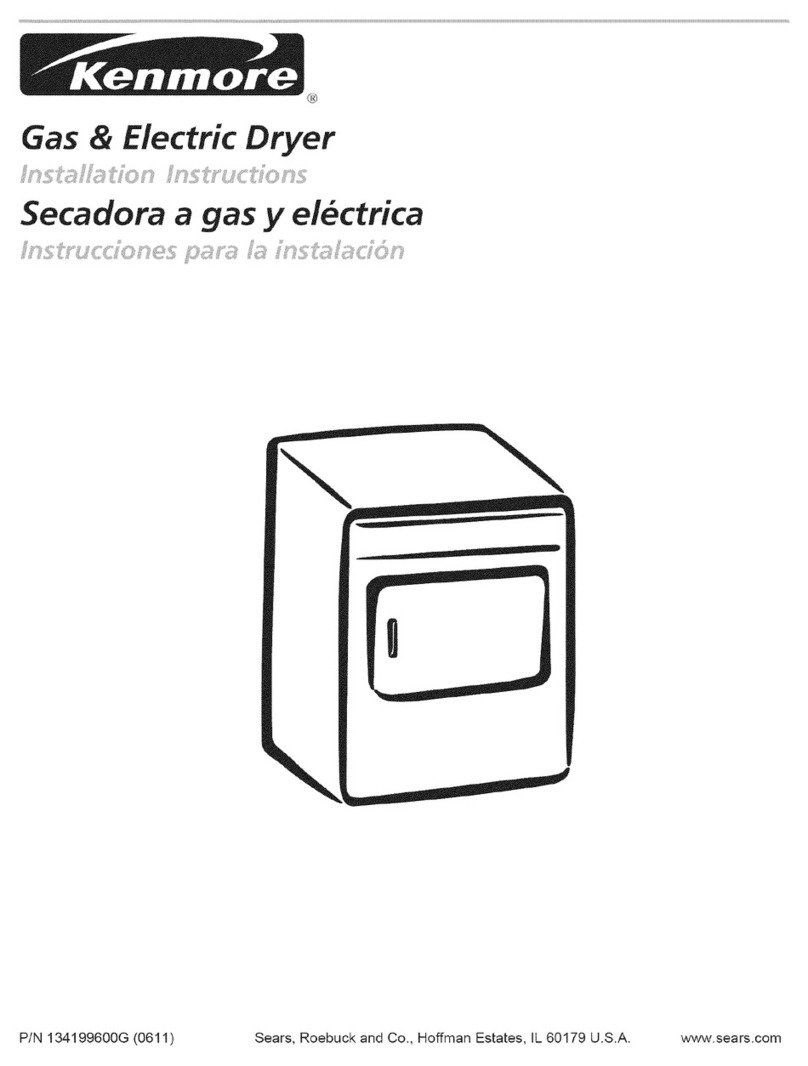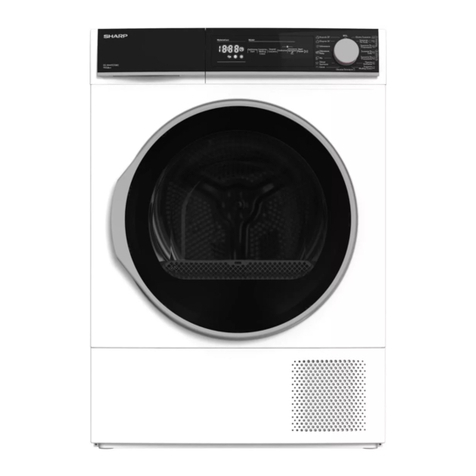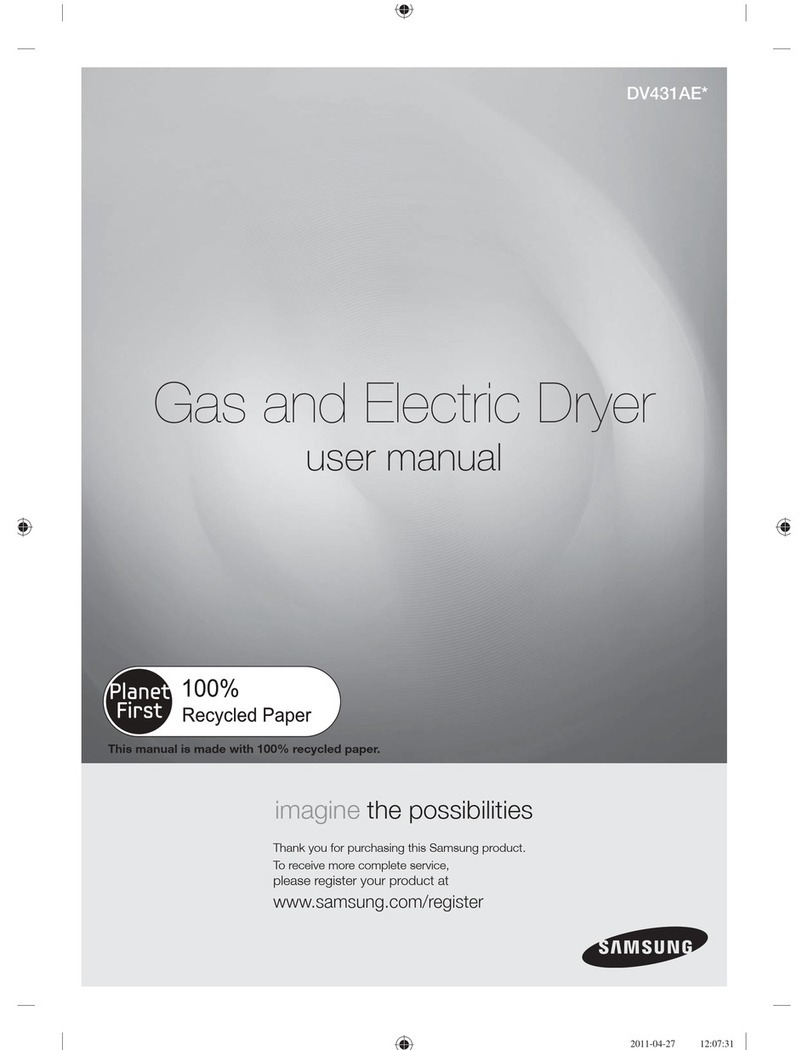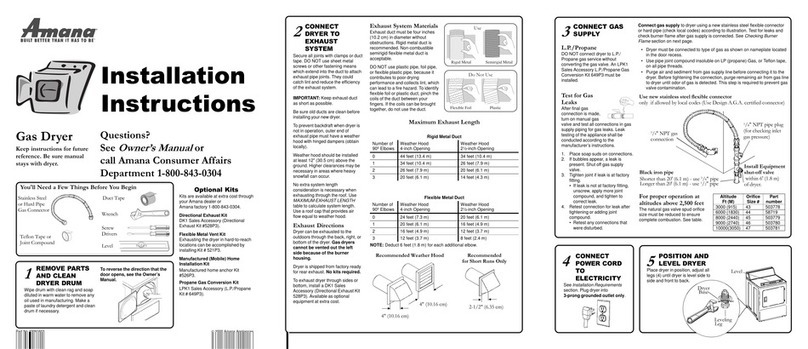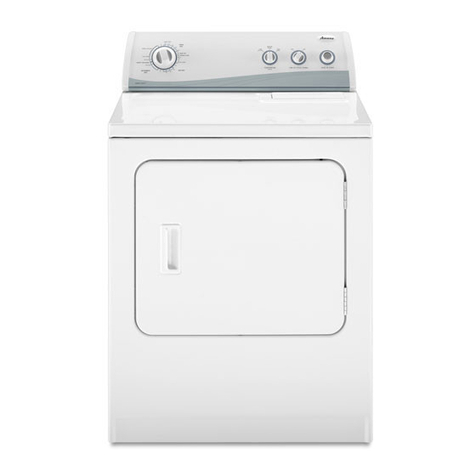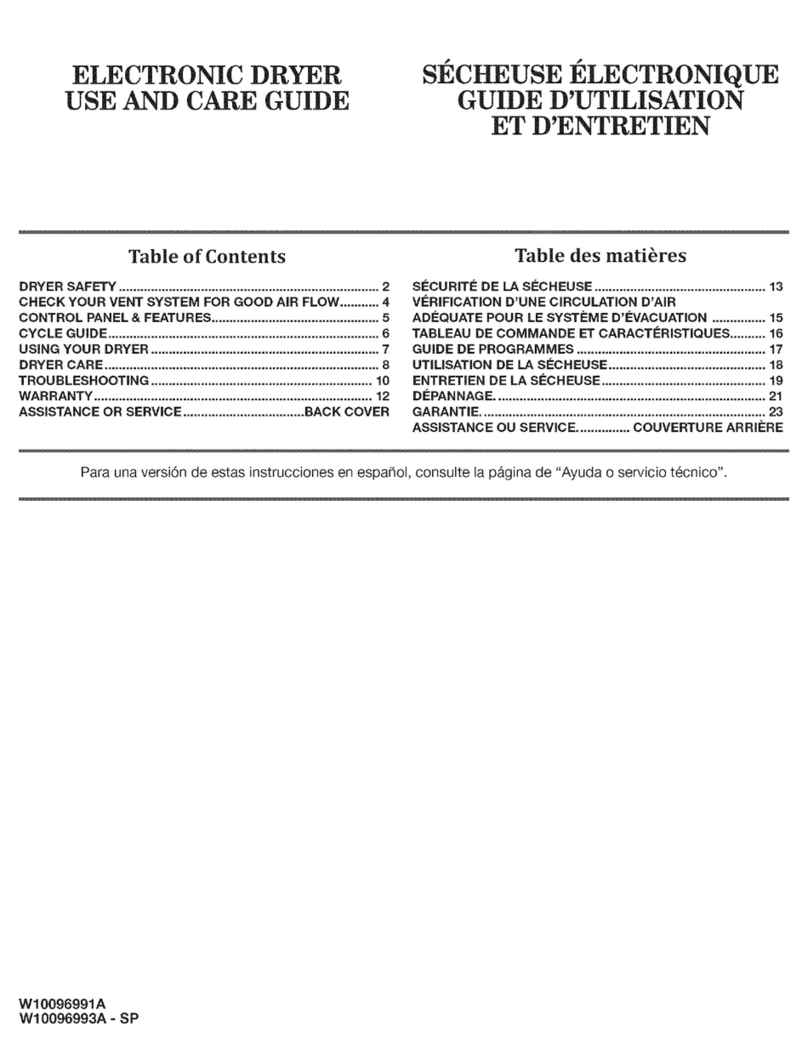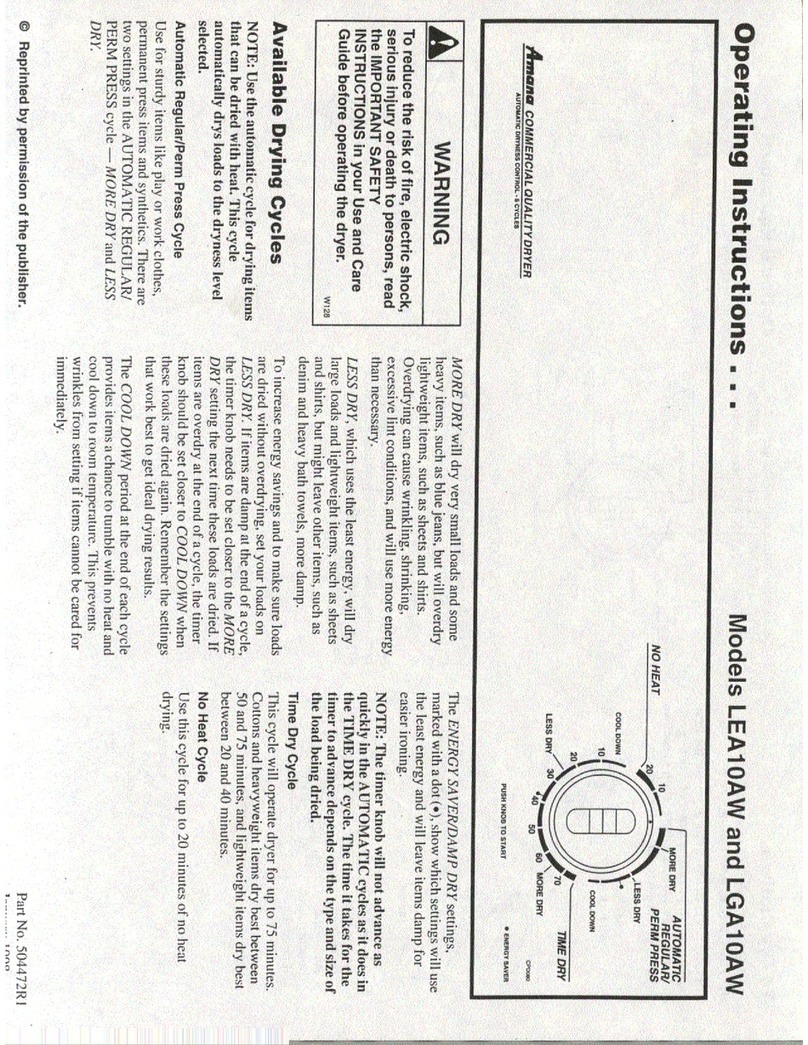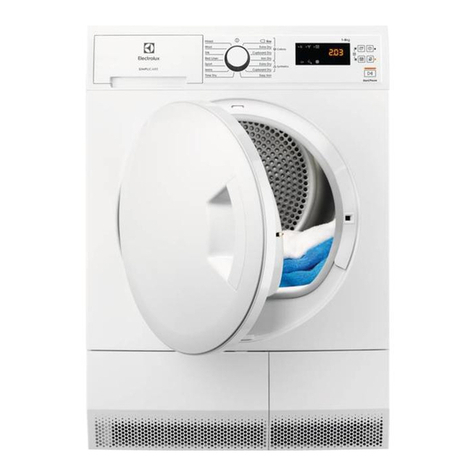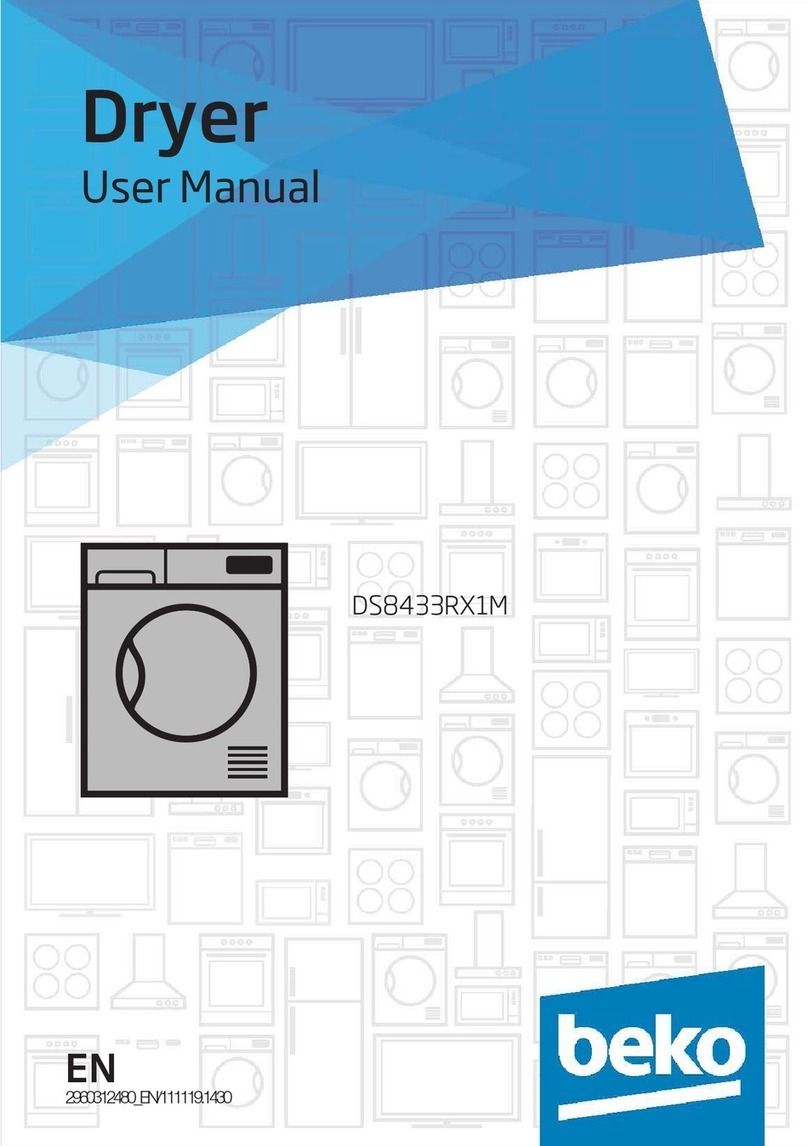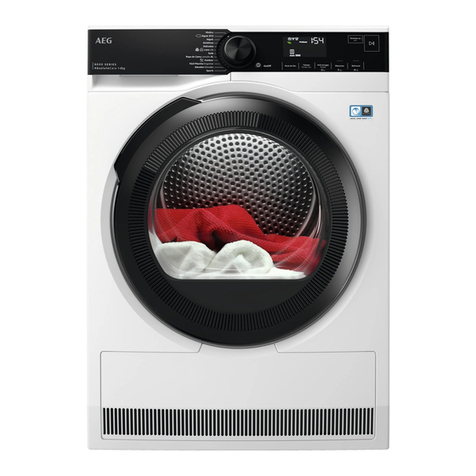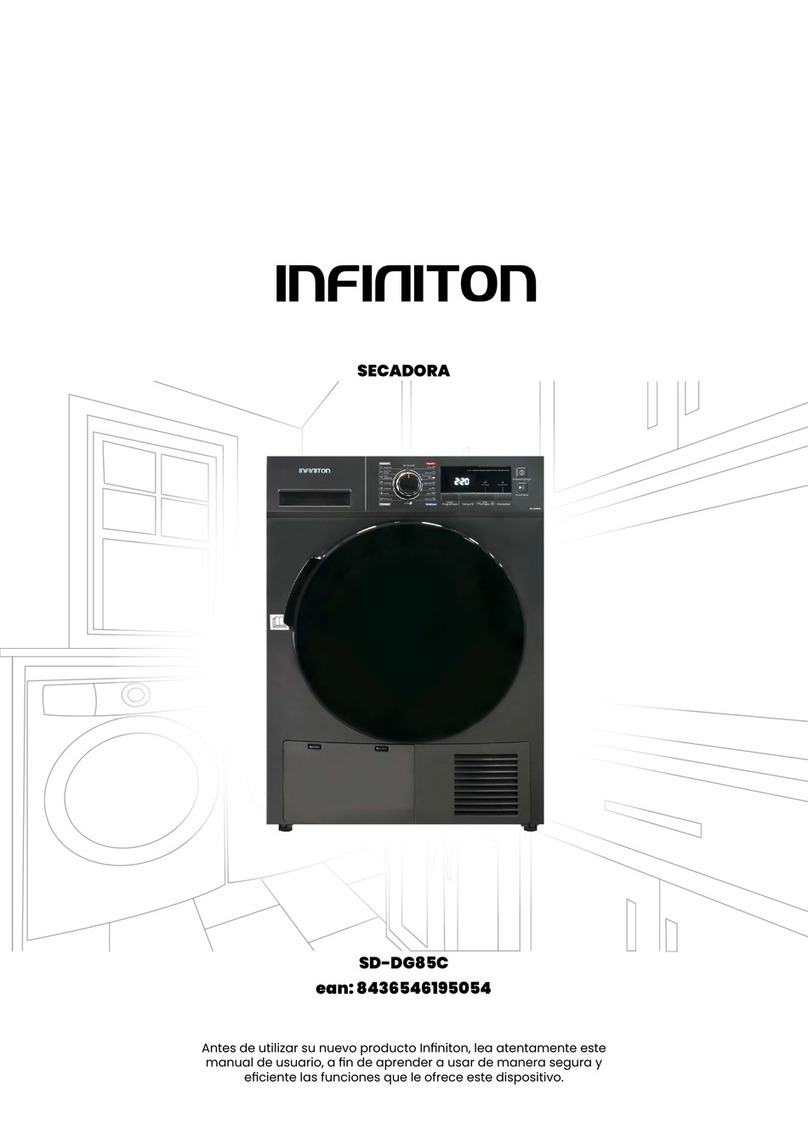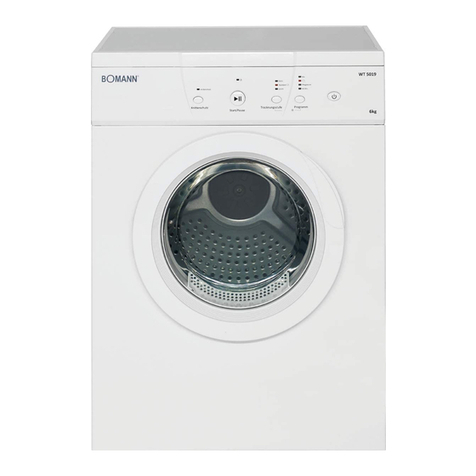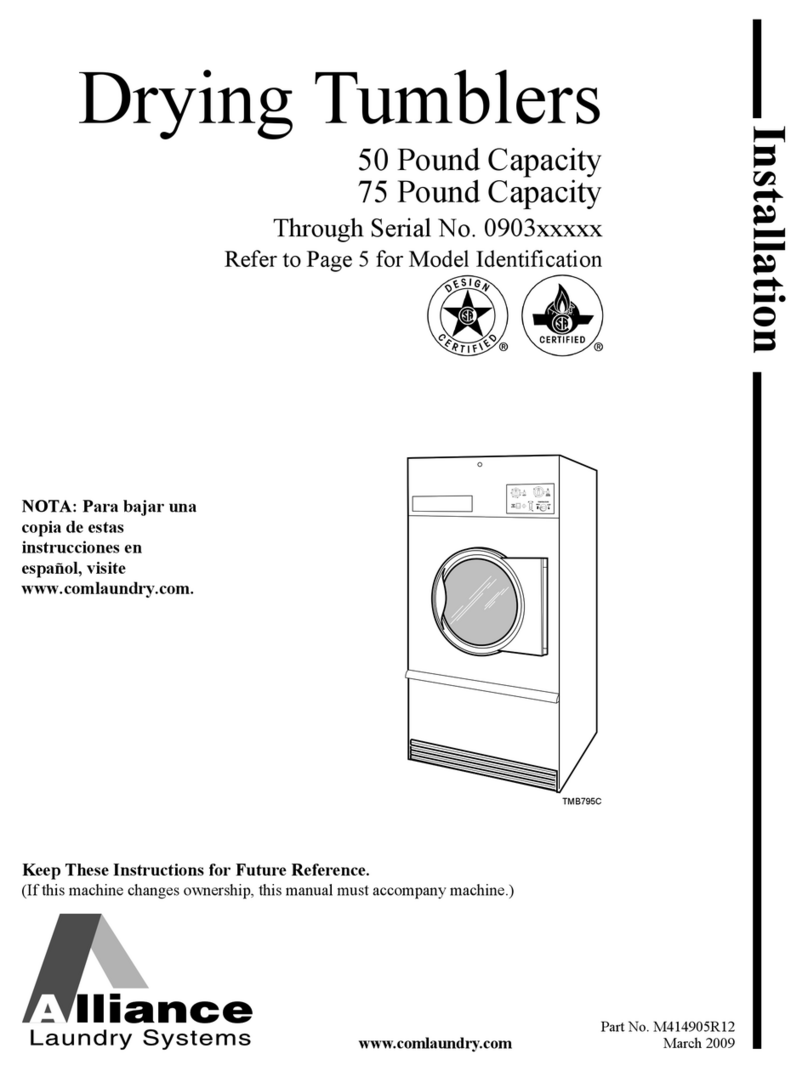
2
Do not place into your dryer items that have been spotted
or soaked with vegetable oil or cooking oil. Even after being
washed, these items may contain significant amounts of these
oils. The remaining oil can ignite spontaneously. The potential
for spontaneous ignition increases when the items containing
vegetable oil or cooking oil are exposed to heat. Heat
sources, such as your dryer, can warm these items, allowing an
oxidation reaction in the oil to occur.Oxidation creates heat.
If this heat cannot escape, the items can become hot enough
to catch fire. Piling, stacking or storing these kinds of items
may prevent heat from escaping and can create a fire hazard.
All washed and unwashed fabrics that contain vegetable oil or
cooking oil can be dangerous. Washing these items in hot
water with extra detergent will reduce, but will not eliminate,
the hazard. Always use the “cool down” cycle for these items
to reduce the items’ temperature. Never remove these
items from the dryer hot or interrupt the drying cycle until
the items have run through the “cool down” cycle. Never
pile or stack these items when they are hot.
SAVE THESE INSTRUCTIONS
1) Read all instructions before using the appliance.
2) To avoid the possibility of fire or explosion:
a. Do not dry items that have been previously cleaned in,
washed in, soaked in, or spotted with gasoline, dry-
cleaning solvents, other flammable or explosive
substances as they give off vapors that could ignite or
explode. Any material on which you have used a cleaning
solvent, or which is saturated with flammable liquids or
solids, should not be placed in the dryer until all traces
of these flammable liquids or solids and their fumes have
been removed.There are many highly flammable items
used in homes, such as: acetone, denatured alcohol,
gasoline, kerosene, some liquid household cleaners, some
spot removers, turpentine,waxes and wax removers.
b. Items containing foam rubber (may be labeled latex
foam) or similarly textured rubber-like materials must
not be dried on a heat setting. Foam rubber materials
when heated, can under certain circumstances produce
fire by spontaneous combustion.
3) Do not allow children to play on or in the appliance. Close
supervision of children is necessary when the appliance is
used near children.
4) Before the appliance is removed from service or discarded,
remove the door to the drying compartment.
5) Do not reach into the appliance if the drum is moving.
6) Do not install or store this appliance where it will be
exposed to the weather.
7) Do not tamper with controls.
8) Do not repair or replace any part of the appliance or
attempt any servicing unless specifically recommended in
published user-repair instructions that you understand and
have the skills to carry out.
9) Do not use fabric softeners or products to eliminate static
unless recommended for dryer use by the manufacturer of
the fabric softener or product.
10) Clean the lint screen before or after each load.
11) Keep the area around the exhaust opening and surrounding
areas free from lint accumulation, dust and dirt.
12) The interior of the dryer and exhaust duct should be
cleaned periodically by qualified service personnel.
13) This appliance must be properly grounded. Never plug the
appliance cord into a receptacle which is not grounded
adequately and in accordance with local and national codes.
See installation instructions for grounding this appliance.
14) Do not sit on top of the dryer.
I
IMPORTANT SAFETY INSTRUCTIONS
IMPORTANT SAFETY NOTICE & WARNING
The California Safe Drinking Water and Toxic Enforcement Act of
1986 (Proposition 65) requires the Governor of California to
publish a list of substances known to the State of California to
cause cancer or reproductive harm, and requires businesses to
warn customers of potential exposures to such substances.
Users of this appliance are hereby warned that the burning of gas
can result in low–level exposure to some of the listed
substances, including benzene, formaldehyde, and soot, due
primarily to the incomplete combustion of natural gas or liquid
petroleum (LP) fuels. Exhaust ducts should be kept free of
obstructions and properly exhausted dryers will minimize
exposure.
WARNING
Gas leaks may occur in your system and result in a
dangerous situation. Gas leaks may not be detected by smell
alone. Gas suppliers recommend you purchase and install an
UL approved gas detector. Install and use in accordance with
the manufacturer's instructions.
WARNING
WARNING
T
o reduce the risk of fire, electric shock or injury to persons when
using the appliance, follow basic precautions, including the following:
